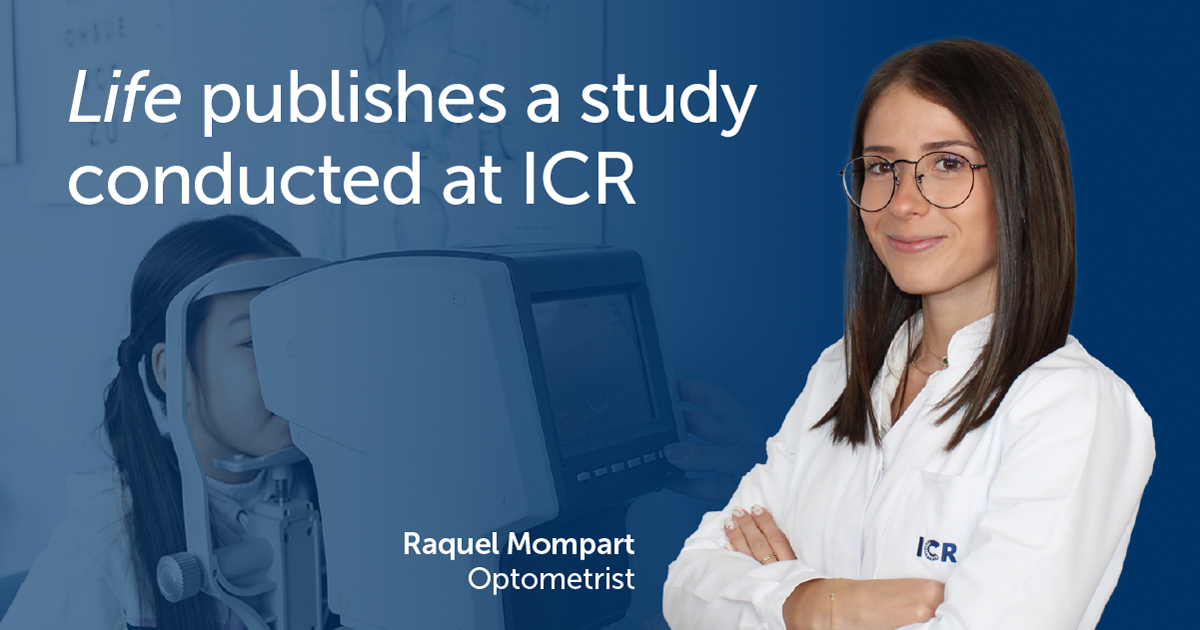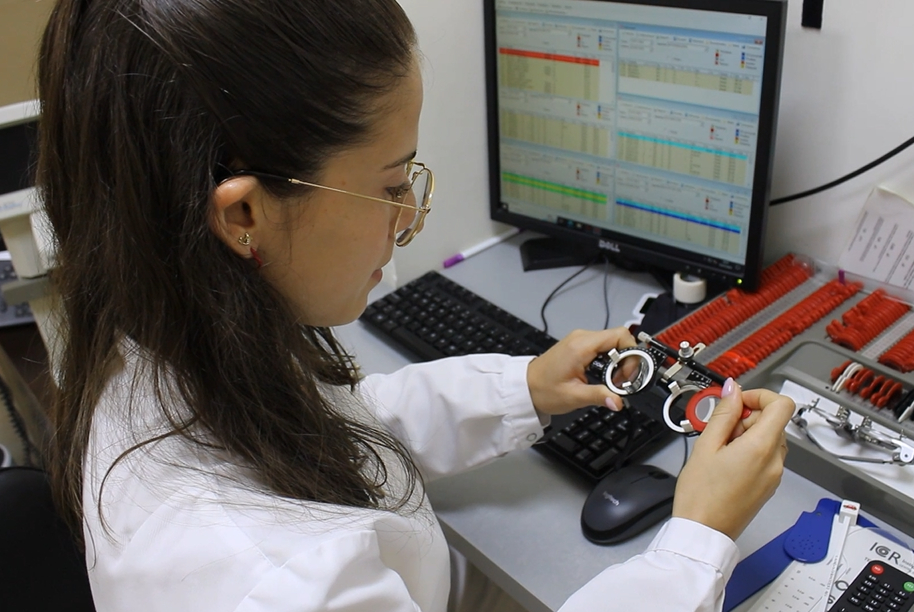
Life magazine has published a study conducted by several professionals from ICR, lead by Optometrist Raquel Mompart, who presented its first version in the dissertation for her degree, in June 2022. The project was then titled “Fijación y área foveal en ambliopía (Fixation and foveal area in amblyopia)” and was presented in a clinical session at ICR.
The work published in the prestigious scientific magazine has a slightly different title “The Relationship between Fixation Stability and Retinal Structural Parameters in Children with Anisometropic, Strabismic and Mixed Amblyopia”, but it is the same in-depth analysis of the results from the study carried out at ICR. In this case it has also had the participation of other professionals at ICR, Dr. Lluís Cavero, Dr. M. Soledad Pighin and optometrist Lluís González.
The study was conceived with the aim of determining, in pediatric patients with amblyopia, if there is any relationship between the stability of gaze fixation and the foveal area, which is the area of the retina that perceives colors and sharpness. In other words, to define whether the difficulty to fixate the gaze with a lazy eye is related to the patient’s visual acuity. For this reason, several parameters of visual skills in these patients were also taken into account and analyzed.
Amblyopia or lazy eye syndrome is an alteration of sight caused by asymmetry in the use of the two eyes (the brain recieves information of lower quality from one of them, so it gives preference to the other one). Usually it is developed in very early ages and it is the main cause of child vision loss. It is important to detect it soon, because the success rate in treatments critically decreases from the moment the patient reaches 7-8 years old.
The study was designed to be carried out at the centers of Institut Català de Retina in Barcelona and Terrassa. For this reason, the corresponding protocols were drawn up and presented to the institution’s ethics committee. An application was also submitted for a research grant awarded annually by the Terrassa City Council. With the green light from the ethics committee and the awarding of the grant for the grant, it was launched.
A sample of 40 patients between 5 and 9 years of age was taken, with the prior consent of the families or legal guardians. The sample was divided into 4 groups depending on the type of amblyopia they suffered:
In addition to the tests to define whether or not each patient could be part of the study, during the investigation each child underwent a microperimetry to evaluate the stability of the gaze fixation point, and an angiographic OCT to analyze the foveal area. Neither test is invasive or requires direct contact with the eye, which is one of the advantages of this study.
The first diagnostic test, microperimetry, is used to measure the sensitivity of the macula or, as in this case, to study the stability of the fixation point of gaze and identify where retinal fixation occurs and its area. A high value in the area implies a worse fixation stability.
The second, optical coherence tomography (OCT), is a test that uses a beam of light to make an image of a section (a tomography) of the ocular structures with a very high resolution. Since the image can be greatly magnified, it allows a very precise examination of the section of the eye to be analyzed (optic nerve, anterior segment, etc.); in this study, the fovea.

The results of these tests indicate that there is a negative correlation between fixation stability and foveal area, although it has been observed that mixed and anisometropic amblyopia have a higher FAZ value compared to strabismic or control groups. However, more research will be needed to confirm or disprove these relationships.
What the study can conclude is that all patients with amblyopia have worse visual acuity; more difficulties in sensorium, 3D perception, shape detection, contrast sensitivity, and worse fixation stability, always compared to an eye without amblyopia.
Cases of strabismic amblyopia are those with the greatest compromise with fixation stability; they have larger fixation areas, resulting in worse fixation between the different amblyopia groups and the control group.
The interocular differences in central macular thickness were more notable in the three amblyopia groups than in the control group. These results suggest that the study of interocular asymmetry in functional and anatomical parameters may be very relevant.

Contact us or request an appointment with our medical team.